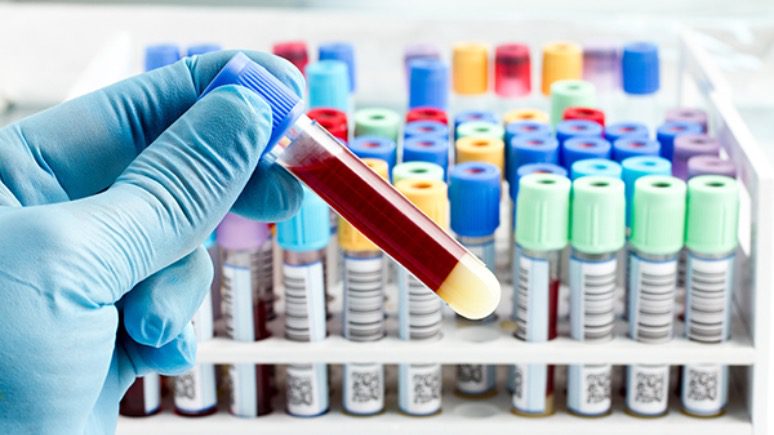Shingles symptoms
Shingles most often affect a section of the body on one side, and you should look out for the following as these are some of shingles symptoms:
- Extreme sensitivity to touch
- Pain that may feel like burning, tingling, or numbness
- Itching
- A few days after the pain begins, a red rash appears
- Blisters filled with fluid form, break, then crust over
When looking out for shingles symptoms, you should also be wary of fatigue, a fever, headache, and light sensitivity. The first sign of shingles is usually pain, which can be very severe. Sometimes shingles pain is mistaken for heart, lung, or kidney dysfunction. Sometimes, people develop shingles pain, but a rash never occurs.
Typically, the rash of shingles occurs in a path around one side of the trunk of the body. For example, it can occur on the side of the face or neck or affect one eye.
Painful rash and sensitivity to touch
Another fact of what the symptoms of shingles are when it comes to the rash include the following: The rash that develops with shingles will be more painful than an itching sensation, and this is because nerve roots run along your body, providing sensation.
Once reactivated, the shingles virus will travel up the nerve roots to the skin surface and result in a painful, sensitive rash. The rash can present itself anywhere on the body and wrap right around it and become present on the face. The rash appears in two parts, namely prodromal and active stages. What are shingles symptoms during these two stages:
What are the symptoms of shingles during the Prodromal stage?
This is the stage before the rash appears, and the skin will experience sensations such as :
- Numbness, tingling, pain, or burning within the back, chest, belly, neck, face, and head region. The rash will be more common in the back and chest area in many cases.
- The patient may also experience chills, diarrhea, and stomachache.
- Swelling or tenderness of the lymph nodes.
What are shingles symptoms during the Active stage?
- A rash will form on one side of the body. Later, this will become blisters with clear fluid inside at first, which will become murky after a few days.
- The rash may also be present on the face (forehead around one eye, on the cheek, or nose).
- Piercing needle-like pain.
- Blisters can break, ooze fluid out and crust over during the time.
Not all patients with shingles will develop a rash but could still exhibit the other symptoms of shingles. If herpes zoster ophthalmicus or keratitis is left untreated, it can lead to vision problems and possible blindness.
When to see a doctor
If you think you might have shingles, notify your doctor right away. It is especially important to seek medical attention if:
- You are 70 years old or older. The risk of complications related to shingles in significantly increased by age
- Your symptoms involve one of your eyes. Untreated shingles can lead to permanent damage to an eye
- You or someone you live with has weakened immunity or takes corticosteroid medications
- You have severe pain
Herpes zoster diagnosis
Your physician will most likely diagnose herpes zoster based on your history, which includes pain located on one side of your body, face or neck or around one eye, and the appearance of the typical shingles rash and blisters.
It is rarely necessary to take cultures of the blisters for laboratory examinations to make a herpes zoster diagnosis. Sometimes the first stages of shingles can be mistaken for hives, scabies, or even bug bites.
As soon as you think there is a possibility that you may have shingles, medical attention should be sought immediately. Having adhered to what are the symptoms of shingles are, diagnostic procedures will be as follows:
- Tzanck smear: The Tzank smear is no longer used that much due to more improved methods for herpes zoster diagnosing. The method involves taking samples of the fluid and skin tissue which will be examined microscopically after being stained first. Then, the specialist will check for viral changes within the cell tissue. NB: *The method cannot differentiate between the Varicella-zoster virus (VZV) and the herpes simplex virus (HSV). Varicella-zoster virus causes chickenpox and shingles, while the herpes simplex virus is responsible for cold sores and genital herpes.
- Special antibody test: A Direct Fluorescent Antibody test or (DFA) of the blister will be able to tell the presence of the varicella-zoster virus, and the results only take a few hours.
- Viral cultures: Viral culture tests can take a week or two for results to show and can differentiate between the HSV and VZV viruses.
- Skin biopsy: The skin biopsy will examine the skin tissue with the rash under a microscope. Sometimes this will require a culture of the tissue that has been biopsied.
- Polymerize Chain Reaction (PCR). In many cases, clinical findings will be adequate to diagnose herpes zoster, but the tests are needed for diagnosis in some cases. Shingles can happen to anybody who has had the chickenpox virus as a child or later chickenpox as an adult. Herpes zoster or Varicella zoster is the same virus that causes chickenpox, which later in life reactivates in some people within their elderly years, manifesting as shingles.
















Leave a Reply
You must be logged in to post a comment.